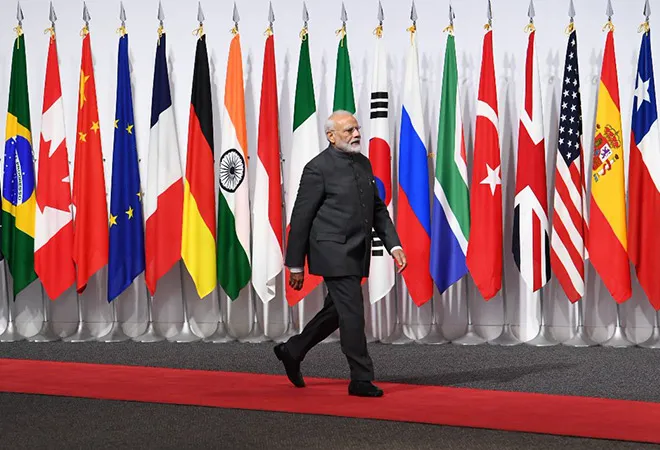This year’s G-20 summit is being held at a time of grave global distress. Multiple fault-lines are threatening to derail the global order and there is no leadership around the world that seems capable of rising up to the challenges of our times. Donald Trump is busy being Trump, threatening to rip up global frameworks without offering any real alternative. The European Union is coming to terms with own dysfunctionality at a time when it is being challenged from within and without. The United Kingdom is so mired in a political mess of its own making that it is unclear if it can even think of anything beyond the next leadership contests for the post of prime minster. China is facing an economic crisis which even with all the centralisation of power in Xi Jinping is finding it difficult to manage. And Russia has no larger interest than challenging the US and the West at every possible platform. In more ways than one, India is well-positioned to make its presence felt.
As leaders of G-20 meet in Osaka, there is a sense of bewilderment about the real aims of this platform and if at all it has any relevance in this day and age. Today, the G-20 perhaps faces its most serious challenge since it first met in November 2008 to tackle the financial crisis with a primary mandate of preventing future international financial crises. As trade tensions escalate among major powers and global growth decelerates, the G-20 countries will find it hard to present a common framework to tackle global challenges, something that they were able to do after the 2008 financial crisis when they not only consolidated IMF’s budget but also prevented protectionist tendencies from taking root.
Today, the world looks much different. More than anything else, the international community would be watching the meeting between US President Donald Trump and Chinese leader Xi Jinping on the sidelines, and attention will be focused on whether Xi and Trump can strike a deal to end the ongoing trade war. It seems that Washington and Beijing have decided to resume their talks to resolve the trade dispute. Whatever the outcome, tensions between the US and China are unlikely to get resolved anytime soon with the structural shifts shaping the trajectory of this bilateral relationship.
For Trump, trade is going to be a key issue area as he starts his re-election campaign. And not surprisingly, ahead of his meeting with Indian Prime Minister Narendra Modi on the sidelines of the G-20 Summit, Trump decided to hit out at India, suggesting that India's tariffs on US products were “unacceptable”and they must be withdrawn. This despite the fact that US Secretary of State Mike Pompeo, who was in New Delhi this week, sought to play down trade tension with India by promising a renewed focus on negotiating better ties. Modi’s engagement with Trump would therefore require his diplomatic skills at his best.
The last G-20 summit saw New Delhi participating in two trilaterals – one with Japan and the US on maritime cooperation and one with Russia and China on trade. It reflected a new confidence on the part of New Delhi to pursue issue based alignments. But as tensions rise between major powers and the Trump administration remains adamant on trade, India’s ability to navigate this tricky terrain will be severely tested.
Modi has gone into the G-20 summit with an expansive agenda in mind to focus on “discussing the major challenges and opportunities faced by our world today with other global leaders” as “women empowerment, issues related to digitalisation and artificial intelligence, and progress in achieving SDGs and in our common efforts to address major global challenges such as terrorism and climate change form the rich agenda of the Summit.” He is also viewing this G-20 summit as an important stepping stone for India to host the G20 summit in 2022, on the 75th anniversary of India’s independence. So clearly, Modi has great expectations from the G-20. Whether the G-20 in Osaka will be able to deliver still remains an open question.
This commentary originally appeared in Business Standard
The views expressed above belong to the author(s). ORF research and analyses now available on Telegram! Click here to access our curated content — blogs, longforms and interviews.




 PREV
PREV


